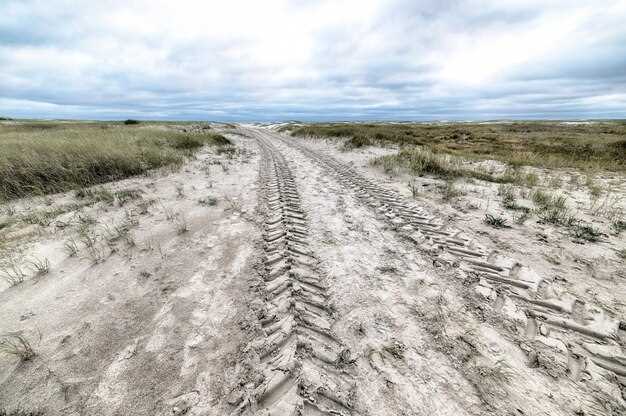
For off-road enthusiasts, the choice of tires can make or break an adventure. All-terrain tires are specifically designed to deliver versatility across various terrains, from rocky trails to muddy landscapes. Selecting the right tires not only enhances vehicle performance but also ensures safety and comfort during rugged expeditions. This article delves into the best all-terrain tires available on the market, catering to both seasoned adventurers and weekend warriors alike.
Understanding the Importance of All-Terrain Tires
All-terrain tires strike a fine balance between on-road comfort and off-road capability. Unlike standard tires, which are tailored for specific conditions, all-terrain tires provide a hybrid solution, enabling vehicle owners to tackle diverse environments without needing to swap tires frequently. The innovative tread patterns and rubber compounds used in these tires are engineered to optimize grip, durability, and stability, regardless of the surface.
In this guide, we will explore key features to consider when choosing all-terrain tires and highlight some of the top models that excel in various conditions. From extreme rock crawling to muddy trails, we aim to provide insights that empower off-road enthusiasts to make informed decisions about their tire selection.
Choosing the Right Tire Size for Your Off-Road Vehicle
Selecting the appropriate tire size is critical for optimizing your off-road experience. The right size impacts traction, handling, and overall performance on various terrains.
Understand Your Vehicle’s Specifications: Before making a decision, consult your vehicle’s manual for manufacturer-recommended tire sizes. This information ensures compatibility with your vehicle’s suspension and drivetrain.
Consider Terrain Type: Different terrains require specific tire sizes. For instance, larger tires provide better ground clearance and traction in deep mud or sand, while smaller, narrower tires might excel on rocky or technical trails where precision and agility are needed.
Gauge Wheel Well Space: When upsizing tires, ensure they fit within the wheel wells without rubbing against the vehicle frame or suspension components. Measure the current tire clearance and assess how much additional size your vehicle can accommodate safely.
Load Rating: Choose a tire size that corresponds with your vehicle’s load capacity. Off-road tires come with various load ratings that indicate their ability to handle weight. Ensure that the selected tire can support the vehicle’s weight, especially when loaded for off-road adventures.
Adjust for Modifications: If your vehicle has undergone modifications like lift kits or body lifts, you may opt for larger tires. Ensure that you balance size with functionality, as too large a tire can negatively affect handling and brake performance.
Think About Aspect Ratio: The aspect ratio refers to the height of the tire sidewall relative to its width. A taller sidewall generally provides better cushioning and traction on uneven surfaces, while a lower sidewall enhances stability at higher speeds. Choose based on the balance of comfort and performance you desire.
Test Different Sizes: If possible, test various tire sizes to find the best fit for your driving style and terrain. Many off-road enthusiasts take advantage of rental or demo vehicles equipped with different tires before committing to a purchase.
Ultimately, choosing the right tire size is a combination of understanding your vehicle, the terrain you’ll tackle, and your personal driving preferences. Prioritize these factors for an enjoyable off-road experience.
Understanding Tread Patterns and Their Impact on Performance

Tread patterns are a crucial aspect of tire design that significantly influence vehicle performance, especially in off-road conditions. The arrangement, depth, and type of tread directly affect traction, stability, and durability, making it essential for off-road enthusiasts to understand these factors when selecting all-terrain tires.
One of the primary functions of tread patterns is to enhance grip on various surfaces. Tires with more aggressive, larger voids between the tread blocks are better suited for loose or uneven terrain, such as mud, sand, and rocks. These large channels allow debris to be expelled and provide a biting edge for traction. Conversely, tires designed with a tighter tread pattern are generally optimized for hard-packed surfaces, delivering improved control and stability at higher speeds.
The tread depth also plays a pivotal role in performance. Deeper treads can penetrate soft surfaces, which helps in maintaining traction, while shallower treads often provide better handling and responsiveness on solid ground. Selecting the appropriate tread depth based on the most common driving conditions is vital for maximizing tire life and performance.
Another important aspect to consider is the shoulder design of the tire. Aggressive shoulders can assist in cornering and provide extra grip during turns, particularly on uneven terrains. This feature is particularly beneficial in off-road scenarios, where a vehicle may encounter sudden changes in surface levels.
Additionally, different materials and patterns can influence tire behavior. Tires with a staggered pattern may enhance self-cleaning capabilities, allowing mud and debris to shed more effectively. This feature prevents clogging and maintains optimal traction over prolonged use in challenging conditions.
Ultimately, understanding tread patterns empowers off-road enthusiasts to select the best all-terrain tires for their specific needs. By aligning tread characteristics with the intended driving environment, drivers can enhance their vehicles’ performance, ensuring both safety and enjoyment during their off-road adventures.
Comparing Popular All-Terrain Tire Brands and Models

In the realm of all-terrain tires, several brands stand out for their performance, durability, and versatility. Among them, Goodyear, BFGoodrich, and Michelin frequently top enthusiasts’ lists. Each of these brands offers multiple models catering to varying off-road conditions and vehicle types.
Goodyear’s Wrangler series, particularly the Wrangler Duratrac, is well-regarded for its aggressive tread pattern and superior traction in mud and snow. This tire is designed with self-cleaning capabilities, allowing for enhanced performance in challenging terrains. Additionally, it features reinforced sidewalls for increased durability against punctures and cuts.
BFGoodrich is known for its All-Terrain T/A KO2 model, which has gained a reputation for exceptional off-road handling and on-road comfort. Its unique tread design provides excellent grip on rocky and loose surfaces, while the rubber compounds used help resist chipping and tearing. This tire also includes an advanced sidewall design to offer better protection in rugged environments.
Michelin’s LTX A/T2 is aimed at those who want a more balanced performance between off-road adventures and highway driving. This tire excels in providing a quiet ride and improved fuel efficiency, making it a great choice for daily drivers who occasionally venture off the beaten path. The tread pattern supports excellent traction and stability on various surfaces, contributing to a longer tread life.
Another strong contender is the General Grabber ATX, which delivers great performance in both wet and dry conditions. Its variable tread pattern ensures solid grip while driving off-road, and the tire’s robust construction enhances overall durability. This model is particularly favored for its smooth ride quality and low road noise when used on highways.
Lastly, the Nitto Terra Grappler G2 is designed for enthusiasts who prioritize style along with functionality. Its unique design not only enhances the aesthetic appeal of vehicles but also provides superior traction across different terrains. This tire effectively balances off-road capabilities with on-road comfort, making it a versatile choice for a variety of drivers.
When selecting an all-terrain tire, it’s essential to consider factors such as your typical driving conditions, vehicle compatibility, and specific performance needs. Each brand and model presents its own advantages, ensuring that off-road enthusiasts can find a suitable option tailored to their requirements.





